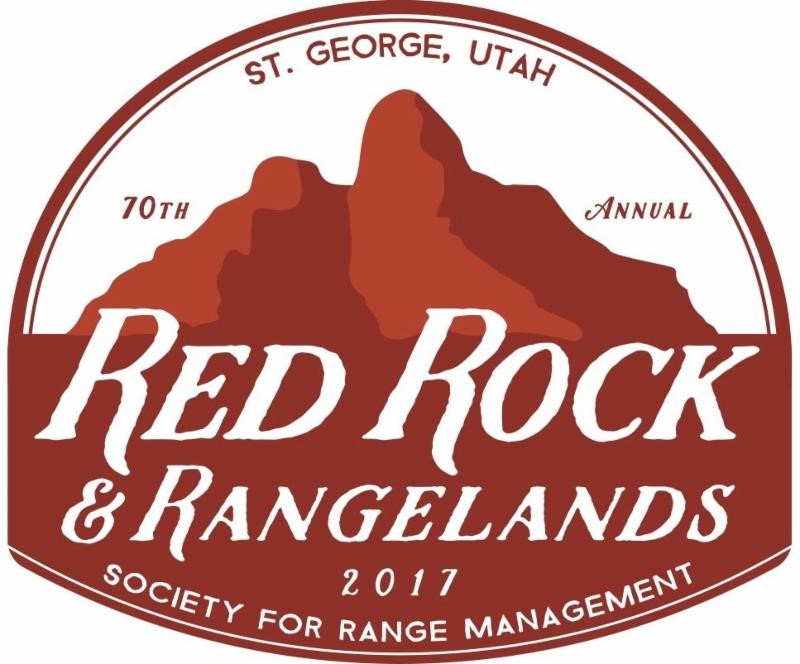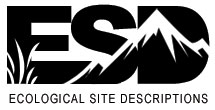Society for Range Management (SRM)
Remote Sensing and Geographic Information Systems (RS/GIS) Committee
Handbook and Bylaws
Original 25 February 1994
Revised March 1999
Revised 1 February 2003
I. Introduction
The Remote Sensing and Geographic Information Systems (RS/GIS) Committee was established to track development of these technologies and funnel information about the capabilities of remote sensing (RS), geographic information systems (GIS), global positioning systems (GPS), and new geospatial technologies to the membership of the Society for Range Management (SRM). Interpretation of aerial photography has long been used as a basis for mapping rangeland sites, and as a tool in conducting range surveys. The advent of multi- and hyper-spectral satellite imagery and the increasing availability of digital data at multiple spatial and temporal scales from both space and airborne platforms has opened new possibilities for assessing and monitoring terrestrial and aquatic systems. Also, the rapid increase in computing power and software availability has made GIS a commonly used tool for both research and management. With selective availability disabled, GPS had greater accuracy for detailed maps of position. Integrating remote sensing, GIS, and GPS will provide new opportunities for assessing and monitoring rangeland vegetation and habitat conditions.
II. RS/GIS Committee Role in SRM's Strategic Plan
As stated in the SRM's Strategic Plan, "The Vision of the Society for Range Management is productive, sustainable rangeland systems." The SRM's Mission "is to promote and enhance the stewardship of rangeland (grassland, pastureland, shrubland, wetland, woodland, and related) ecosystems and associated renewable resources based on scientific research and sound policies." Remote sensing, GIS and GPS are relatively new and rapidly evolving tools. They can be used independently or integrated to assess and monitor numerous ecological processes, and the status of vegetation and habitat conditions, at multiple spatial and temporal scales. Within the context of the Vision and Mission of SRM, the RS/GIS Committee's role is to facilitate the integration of process-based ecology with the spatial and temporal data available from remote sensing, GIS and GPS technologies to improve and sustain rangeland resources, for society's benefit. Key to fulfilling this role is an understanding of how management practices, weather conditions, and other factors that occur at large spatial scales affect the sustainability, health and vigor of rangeland ecosystems. The RS/GIS Committee will serve as a forum for bringing this spatially based technology to the SRM membership, and when possible to other resource professionals and the general public. Also, the RS/GIS Committee acts as a clearinghouse for recommended procedures. The RS/GIS Committee's affiliation with other professional organizations will broaden the Society's scope on the use of these technologies for monitoring vegetation and habitat conditions on rangelands.
III. Purpose of the RS/GIS Committee
The RS/GIS committee's primary purpose is to increase the familiarity of the SRM membership with RS, GIS, GPS, and other new geospatial technologies useful for management of rangeland resources. The RS/GIS committee will encourage both research scientists and management specialists to routinely report the results of their studies and analyses at the SRM annual meetings. Symposia, workshops, and special contributed presentation or poster sessions developed by the RS/GIS committee will improve the membership's understanding about the application, benefits, and limitations of these geospatial technologies.
Because RS, GIS, GPS, and other geospatial technologies are interdisciplinary tools, a strong RS/GIS program in the SRM, particularly if integrated with other committees, will stimulate dialog and research about appropriate applications that will facilitate acceptance of these technologies for managing all rangeland resources. In the SRM committee structure, the RS/GIS Committee is part of the Science and Ecology Division, along with: 1) Rangeland Assessment and Monitoring Committee, 2) Rangeland Invasive Species Committee, 3) Watershed and Riparian Committee, and 4) Wildlife Habitat Committee. Furthermore, in the Communication Division there is the Information and Education Committee. The secondary purpose of the RS/GIS Committee is to coordinate activities in research and education with these and other SRM committees.
Because other organizations (professional societies, government agencies, non-governmental organizations, etc.) are involved with RS, GIS, GPS, and other geospatial technologies for research and management, the tertiary purpose of the RS/GIS Committee is to exchange knowledge with these relevant organizations as it pertains to rangeland resources.
IV. RS/GIS Committee Structure and Affiliation
The RS/GIS Committee will meet at least once each year at the SRM Annual Meeting, presided over by the Chair, or someone designated by the Chair. Committee meetings are open to all persons having an interest in RS, GIS, GPS, and other geospatial technologies; guests are encouraged to provide input and promote discussion. Voting privileges are extended to the self-designated members of the RS/GIS Committee.
Membership of the RS/GIS Committee is open to all interested SRM members. There is no minimum or maximum number of committee members, and there is no maximum time limit on the term of service for a committee member. Because it is important to have continuity between annual meetings for long-term projects, members of the RS/GIS Committee should commit themselves for active participation for at least two years. If an official letter is required to document membership, the Chair will ask the First Vice President to send a letter on behalf of SRM.
At each annual meeting of the RS/GIS Committee: 1) report of the chair and any announcements; 2) reports on old business; 3) reports of committee liaisons; 4) election of officers; and 5) new business will be proposed and voted on to become an annual work plan. To facilitate the work plan, ad-hoc subcommittees can be formed with the approval of the committee membership. The final work plan will have specific duties and timelines for completion as recorded in the minutes.
There is no quorum required for elections of officers or new business, because these activities require active participation by those present. A quorum of seven committee members, including RS/GIS officers, is required to change the RS/GIS Committee Bylaws. Notification of proposed changes in the Bylaws must be made at least one month before the annual meeting.
V. Officers of the RS/GIS Committee
The officers of the RS/GIS Committee are: 1) Chair, 2) Chair-elect, 3) Past-Chair, and 4) Secretary. The qualification for election is at least one year's service on the RS/GIS Committee. Only nominations from the candidate can be accepted. Qualified members do not have to be present at the RS/GIS annual committee meeting in order to be elected, but they must make clear their commitment for nomination and service to the RS/GIS Committee Chair. Because the officers are members of the RS/GIS Committee, they are eligible to vote on any motion including election of new officers.
Service as Chair requires an active commitment for at least four years: first as Secretary, second as Chair-Elect, third as Chair, and fourth as Past-Chair. The yearly term for each position starts at the conclusion of the SRM annual meeting and continues through the next SRM annual meeting. A new Secretary will be elected and start duties at the conclusion of the SRM annual meeting. The Past-Chair must wait at least one year before being eligible for election as Secretary.
If any officer can not meet the position's requirements and duties, then that officer will notify the Chair and request a replacement. The Chair can appoint any volunteer from the RS/GIS Committee to fulfill these duties. If the Chair can not perform its duties, then the Chair should notify the Chair-Elect, the SRM First Vice President, and the Science and Ecology Division Coordinator, and the Chair-Elect will take over as Chair. In this case, the Chair-Elect will serve the remainder of the current term and if so chooses, can serve the next full term either as Chair or Past-Chair.
A. Duties of the Chair
1. Will arrange for a meeting time and room for the RS/GIS Committee meeting at the SRM annual meeting.
2. Will preside over the annual committee meeting, or if unable to attend, designate a replacement, usually the Chair-Elect or the Past-Chair. If the Secretary is unable to attend, appoint someone to take the duties of recording the minutes.
3. Will conduct elections fairly. Will receive nominations for those unable to attend the committee meeting. Will receive proxies for voting from committee members for issues, such as changes in the Bylaws, that were disseminated one month in advance of the annual committee meeting.
4. Will follow the progress of the annual work plan, and update other officers in a timely manner.
5. Will prepare report on committee activities for the President, First Vice President, the Science and Ecology Division BOD represenative, and other SRM officers.
6. Will serve as the primary contact for other professional societies interested in hearing from a representative of SRM with expertise in RS, GIS, GPS and other geospatial technologies. May delegate this responsibility to other committee members. When dealing with outside groups, as a representative not only for the RS/GIS Committee, but for SRM as a whole, the Chair or delegated representative must adhere to all policy and position guidelines accepted by SRM.
7. Will serve as primary contact for the Editorial Board of Rangelands and the Journal of Range Management.
B. Duties of the Chair-Elect
1. Will propose, plan, and chair symposia, workshops and special sessions for the SRM annual meetings as often as deemed appropriate by the committee.
2. Will work with the program committee to develop a list of all remote sensing, GIS, and GPS related posters and presentations with sessions, and times for use by the RS/GIS committee and to be posted on the SRM program web site.
C. Duties of the Secretary
1. Will maintain a current membership list of all active and inactive RS/GIS Committee members and provide updates to the entire membership of RS/GIS Committee activities. The membership list should include other professional societies and research interests. This list may be used as a list of experts for SRM.
2. Will record minutes of all RS/GIS committee meetings. Will maintain a notebook and computer files of the committee minutes, annual reports, this handbook, and other committee communications.
3. Will provide these files to the new Secretary upon completion of term.
D. Duties of the Past-Chair
1. Will advise the Chair, Chair-elect, and Secretary
VI. Duties of the Committee Member
A. Will be an active member of the RS/GIS Committee, representing RS, GIS, GPS, and other geospatial technologies to SRM and representing SRM to the larger community involved with RS, GIS and other geospatial technologies. When dealing with outside groups, as a representative not only for the RS/GIS Committee, but for SRM as a whole, the member must adhere to all policy and position guidelines accepted by SRM.
B. Will encourage scientists, engineers, technicians, and users of geospatial data, regardless of their SRM membership status, to participate in the RS/GIS Committee annual meeting and contribute to the expertise of the group.
C. Will encourage presentations on the use of geospatial technologies at the annual meeting and the papers on the use of geospatial technologies in SRM publications.
D. Will provide relevant information to the Chair-Elect in order to update a list of experts for SRM.
E. Will volunteer for RS/GIS Committee duties in the annual work plan, including hosting symposia or technical sessions at the annual meeting of SRM, and in collaborating with other SRM committees with mutual interests.







 Society for Range Management
Society for Range Management